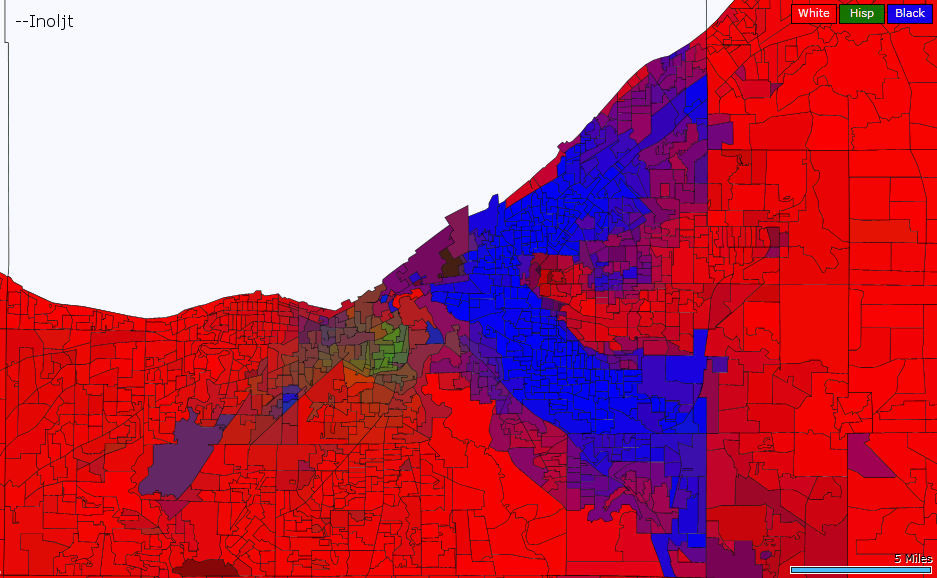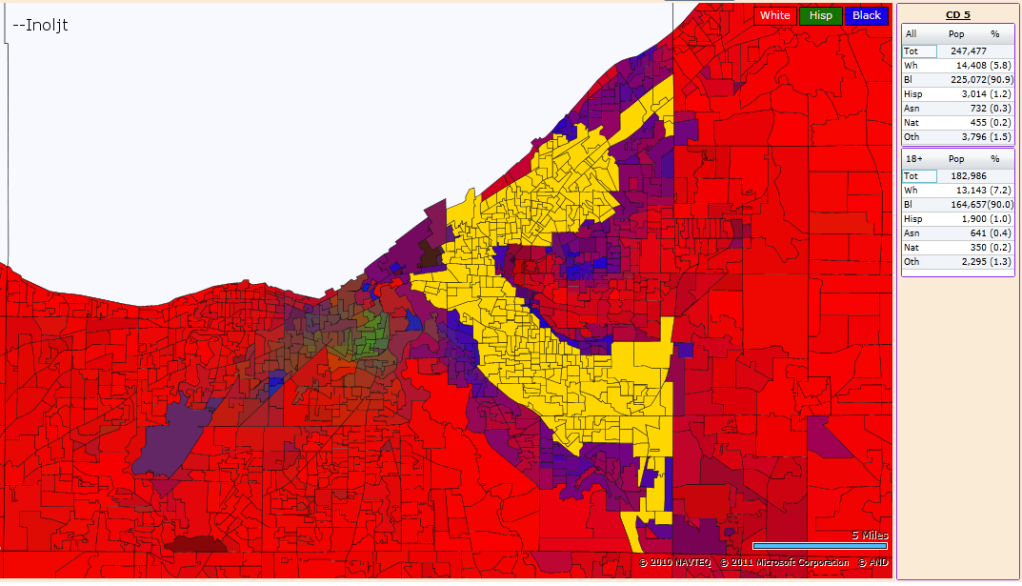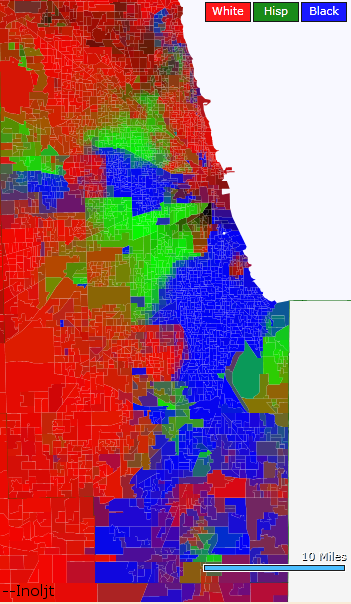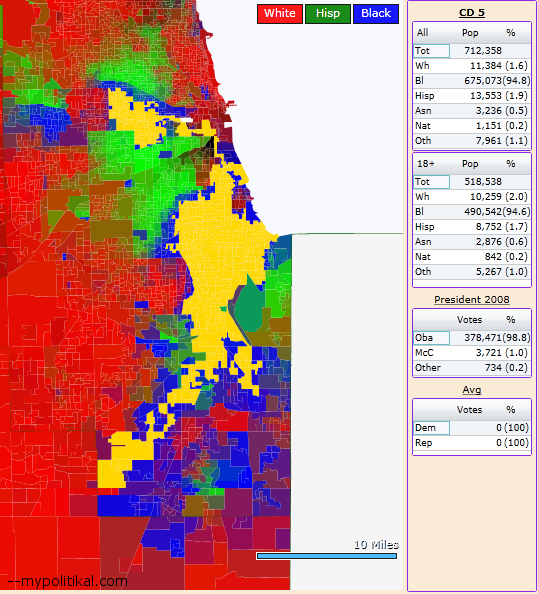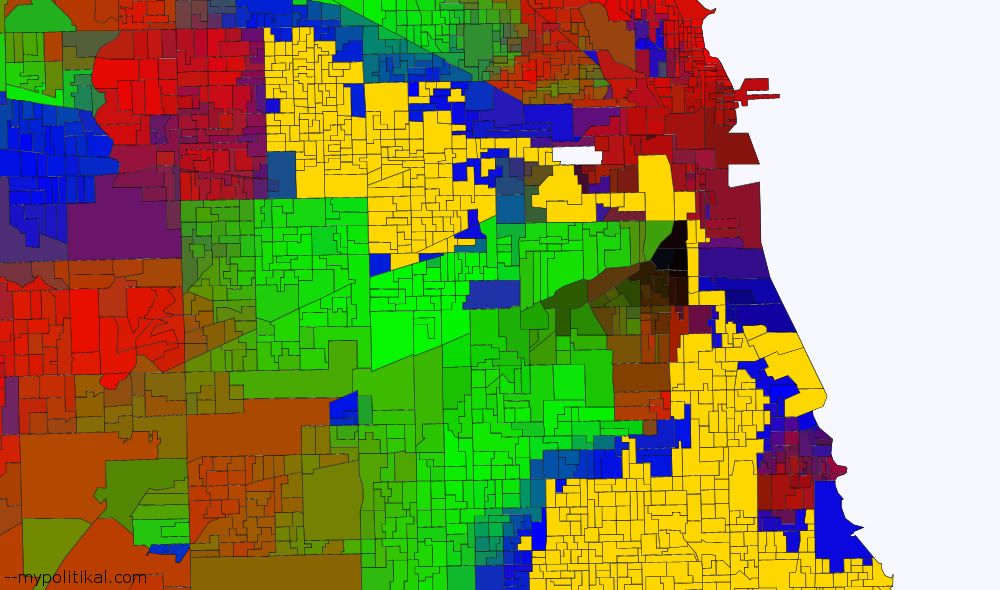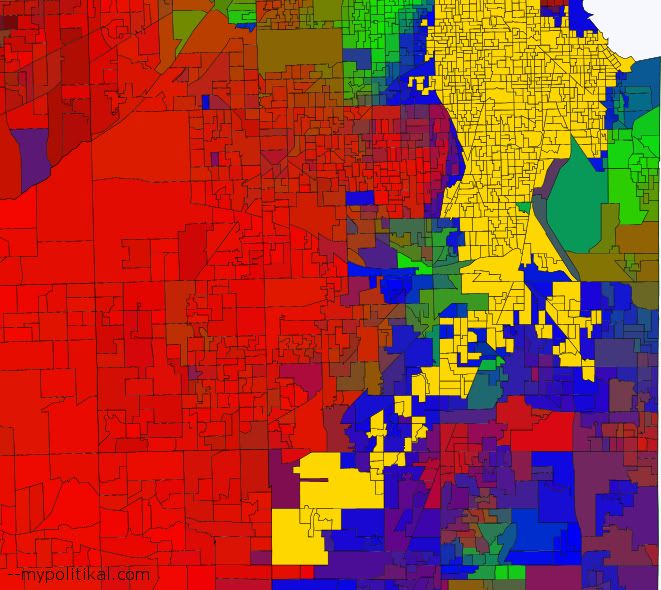This is the first part in a series of posts examining how to create super-packed congressional districts of one race. The other posts in this series pack Asians, Hispanics, Native Americans, and whites.
Packing Blacks
In drawing the districts that will elect America’s congressman and state legislatures, race is of paramount importance. This is because of the Voting Rights Act (VRA), a complicated piece of legislation which regulates how race is used in congressional redistricting. The VRA is supreme to almost every other consideration in redistricting, except the stipulation that districts must have equal population.
The VRA prohibits packing minorities. For instance, an 80% black district that weaves through unrelated areas, taking in only the black-majority parts, is illegal.
Let’s pretend, however, that the VRA doesn’t exist. For curiosity’s sake, what is the blackest district you can possibly make in the United States?
This post will answer that question, using Dave’s Redistricting Application – a tool which allows anybody to create congressional districts.
It is both easy and hard to create an extremely black congressional district.
The easy part is that blacks live in extremely segregated areas. In a completely integrated society, every congressional district would be no more and no less than 12.6% black, since blacks compose 12.6% of America’s population.
In reality, however, segregation has left many areas more than 90% black, while their surroundings are 90% white. Take Cleveland:
It is relatively easy to pack all these blacks into a cohesive unit:
It took less than five minutes to draw this. This district is 90.9% black.
Here, however, comes the hard part. Notice how there are only 247,777 residents of the district. Each congressional district in Ohio needs to have 721,032 residents. To achieve adequate population, the district must add more than 470,000 people. As the picture makes obvious, adding people from outside the black parts of Cleveland will heavily dilute the district’s black percentage (it may end up less than 50% black as one begins adding 95% white precincts).
The solution is to run the district to other highly segregated black parts of Ohio. Unfortunately, doing this involves going through 95% white areas. This will inevitably dilute the black percentage.
One encounters similar troubles with most inner-city areas that have a substantial black population. Once one runs out of 90% black precincts, the black population dwindles fast.
Concentrated populations of blacks are, of course, not just found in inner-cities. A number of Southern states – places like Mississippi – contain substantial black populations. Unfortunately for a mapmaker, however, many Southern blacks live in rural areas – and these rural areas are much more integrated than places like Cleveland. In Alabama, for instance, the most black a district can get is about 81.5%. In many cities, moreover, the black population is dwindling; in Los Angeles nowadays it is simply impossible to create even a black-majority congressional district.
If only there existed an extremely segregated city like Cleveland, except with enough 95% black precincts to fill an entire congressional district…
Well, welcome to Chicago:
In Chicago it is (barely) possible to create a congressional district composed of only the dark blue precincts in this picture:
For a clearer view, here is the northern part of the district:
Here is the southern part:
This monstrosity is a 94.8% black congressional district, linking together almost all the blacks in Chicago. It is possible to get a ~93% black district without linking the South Side to the Lawndale area; one would simply start adding more 70 and 80% precincts in the suburbs south of Chicago. However, linking the two together makes the district slightly blacker.
It is an interesting exercise to guess how this district voted in 2008. Nationally blacks gave 95% of the vote to President Barack Obama. However, blacks tend to be more Democratic in more segregated areas, so the black vote was probably more Democratic in Chicago than nationwide. Moreover, the non-black vote also tends to be extremely Democratic in inner-cities; in Washington, for instance, 86% of whites supported the president. Finally, given Mr. Obama’s roots in Chicago, individuals of all races would be even more likely to vote for him than otherwise would be the case.
My guess is that this district voted 99% Democratic in 2008. (Edit: Presidential data for Illinois has been released, and it turns out that my guess was right; it voted 98.8% Democratic.)
Blacks, of course, are not the only race which can be packed into congressional districts like these. It is possible – and even easier – to do the same with Hispanics. The next post will examine how to pack Hispanics.
–Inoljt
